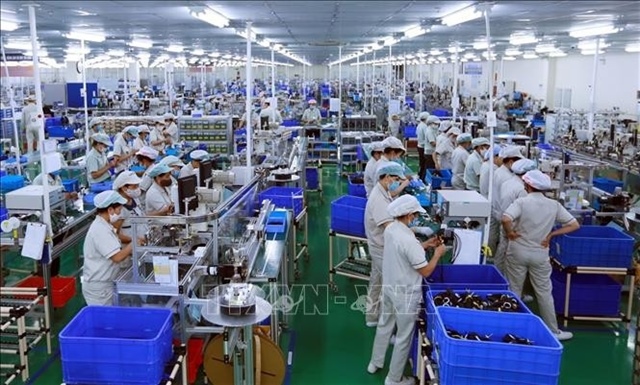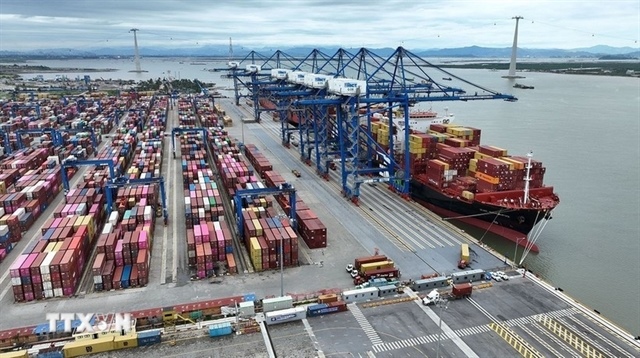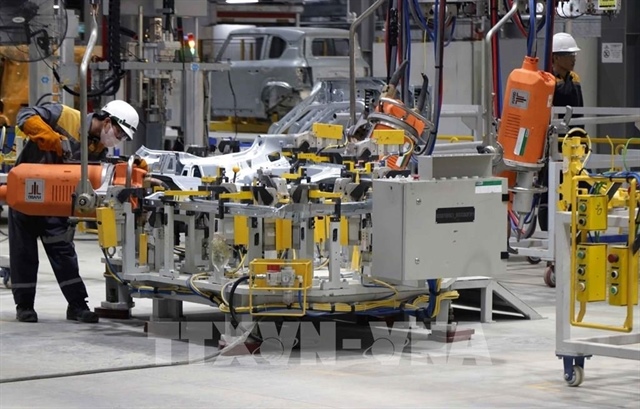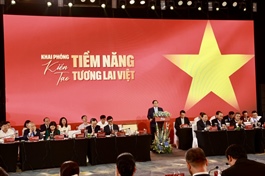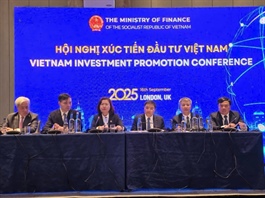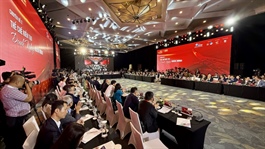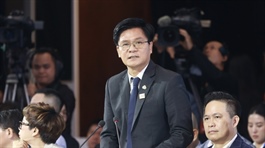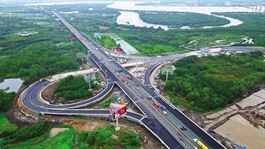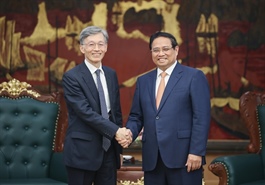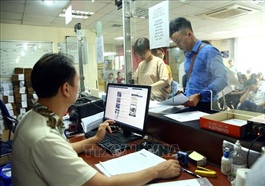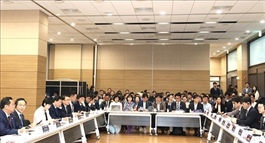Businesses share roadmap to going global
Businesses share roadmap to going global
Successful Vietnamese businesses have shared insights and urged for stronger public-private cooperation to help local firms scale internationally and claim key roles in global supply chains.
How Vietnamese businesses can not only participate in, but also become indispensable links, in key global supply chains has become the pressing question occupying the minds of many businesses as they pursue their journey of reaching regional and international stature.
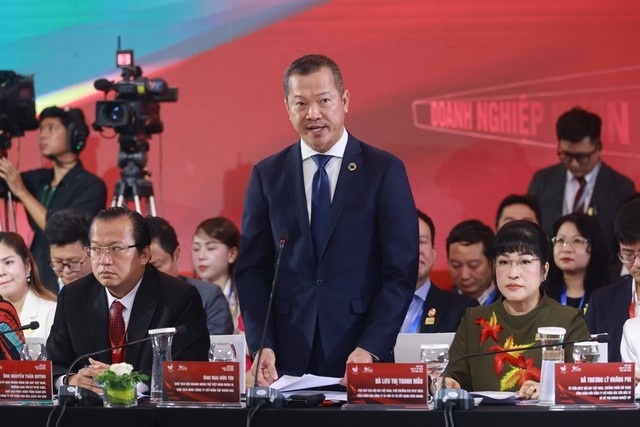
Mai Huu Tin, chairman of U&I Investment Corporation, giving remarks at the thematic session |
The message was highlighted by Mai Huu Tin, chairman of the Vietnam Young Entrepreneurs Association, and chairman of U&I Investment Corporation, at the Vietnam Private Sector Forum 2025 (VPSF 2025) on September 16 in Hanoi.
Representatives from several Vietnamese private enterprises having already made significant inroads into global marketsshared insights and recommendations that offer part of the answer to this national challenge.
Nguyen Quoc Khanh, chairman of AA Corporation, a pioneer in furniture exports to over 40 countries, having contributed to Vietnam's rise as the world's second-largest wood exporter, shared his perspective on the obstacles Vietnamese private businesses face in their efforts to scale regionally and globally.
Khanh noted that the wood industry currently consists of over 6,000 active enterprises, of which 82.8 per cent are Vietnamese-owned and 13.2 per cent are foreign-invested, providing employment for over 500,000 workers across both rural and urban areas.
More importantly, the sector has gradually built a clearly defined and complete supply chain, forming a notable global competitive advantage.
"Vietnam's wood and furniture export industry has now risen to become the world's second-largest, just behind China. It ranks sixth among Vietnam's key export sectors. Many Vietnamese enterprises in the field have successfully built brands in international markets, opened overseas offices, and are actively exploring foreign markets," he said.
“In the context of increasingly complex global economic and political dynamics, Vietnam's wood industry needs close collaboration with the government and relevant ministries,” Khanh said, as he outlined four key proposals.
First, he called for the development of a national brand for Vietnam's wood and furniture sector and stronger government support for export promotion activities, emphasising the need for tighter government oversight of industry trade fairs, recommending that such events be state-endorsed and led by industry associations to ensure alignment with national development goals.
Second, Khanh proposed greater investment in technology to support innovation within the industry.
Third, he emphasised the need to enhance the competitiveness of domestic enterprises relative to their foreign-invested counterparts.
“Despite accounting for less than 15 per cent of the total number of firms in the sector, foreign firms contribute nearly half of the industry's total export value. To address this disparity, it is important for the government to implement specific policy mechanisms in support of domestic enterprises, including tax incentives, preferential access to capital, and the streamlining of administrative procedures related to fire safety and VAT refunds,” said Khanh.
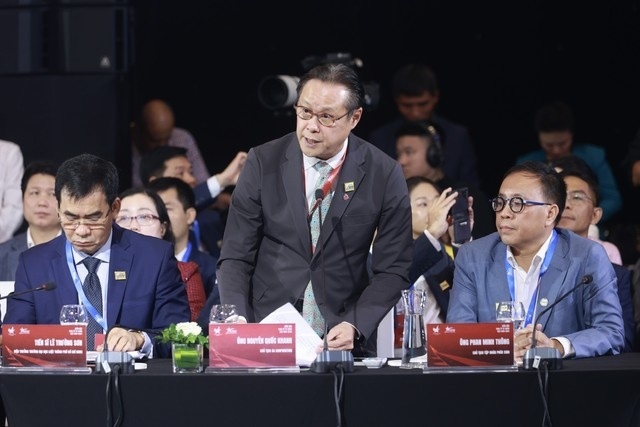
Nguyen Quoc Khanh, chairman of AA Corporation, giving remarks at the thematic session |
Finally,he recommended the launch of a national communications campaign aimed at elevating the profile of Vietnam's wood industry.
Such a campaign, Khanh argued, should be led by the government and relevant management agencies to shift societal perceptions, inspire youth entrepreneurship, attract high-quality talent, draw investment, and ultimately bring higher value-added returns to the industry.
From the perspective of the mechanical engineering and structural steel industry, Trinh Tien Dung, chairman of Dai Dung Group, a company that exports steel structures to over 50 countries and was the contractor for the 24,000-tonne dome of the flagship Vietnam Exposition Centre, proposed the establishment of a national-level development programme.
He urged investment in deepwater ports, increasing the localisation rate, and workforce training in line with international standards. One of his key proposals was the introduction of a policy framework that allows Vietnamese firms to serve as full-package engineering, procurement, and construction (EPC) contractors for major infrastructure projects.
“It is a necessity for the government to issue clear mechanisms enabling domestic enterprises to participate directly as EPC contractors in key national projects such as metro systems, high-speed railways, thermal power plants, and petrochemical complexes,” said Dung.
He also proposed setting mandatory minimum localisation rates to prevent foreign EPC firms from serving merely as nominal contractors while outsourcing most of the work back to Vietnamese firms.
Reflecting on the discussion, Tin, the chair of the thematic session Sharpening Strategic Pillars for Global Expansion, noted that although the challenges differ across sectors, they share a common denominator: the need for collaboration and a proactive, enabling role from the government.
"Businesses are eager to contribute, to engage, and to devote their efforts, but they cannot go it alone. We need national-scale public-private partnership initiatives to truly empower Vietnamese enterprises to reach global heights," Tin concluded.
- 18:27 18/09/2025


